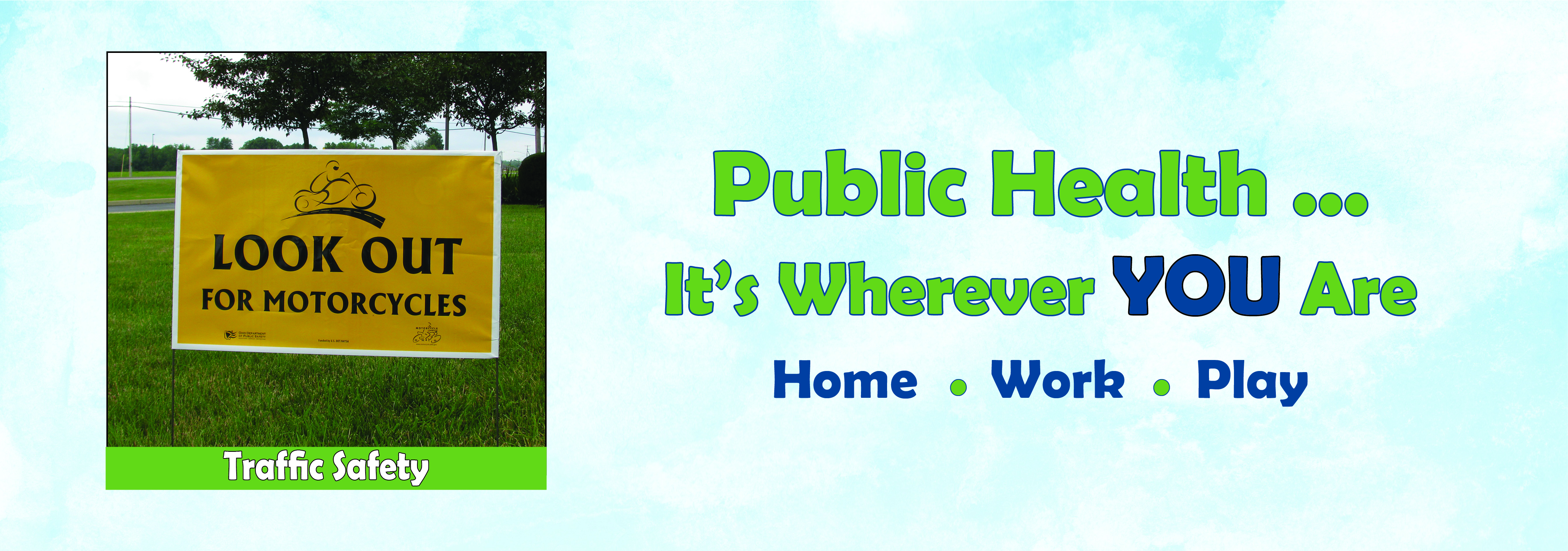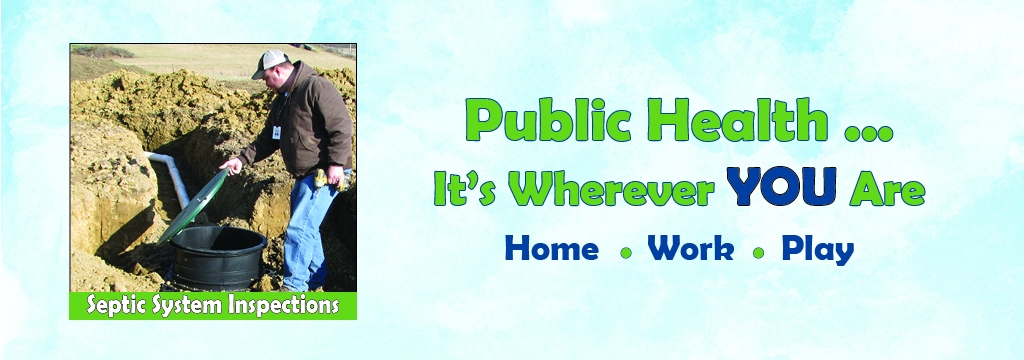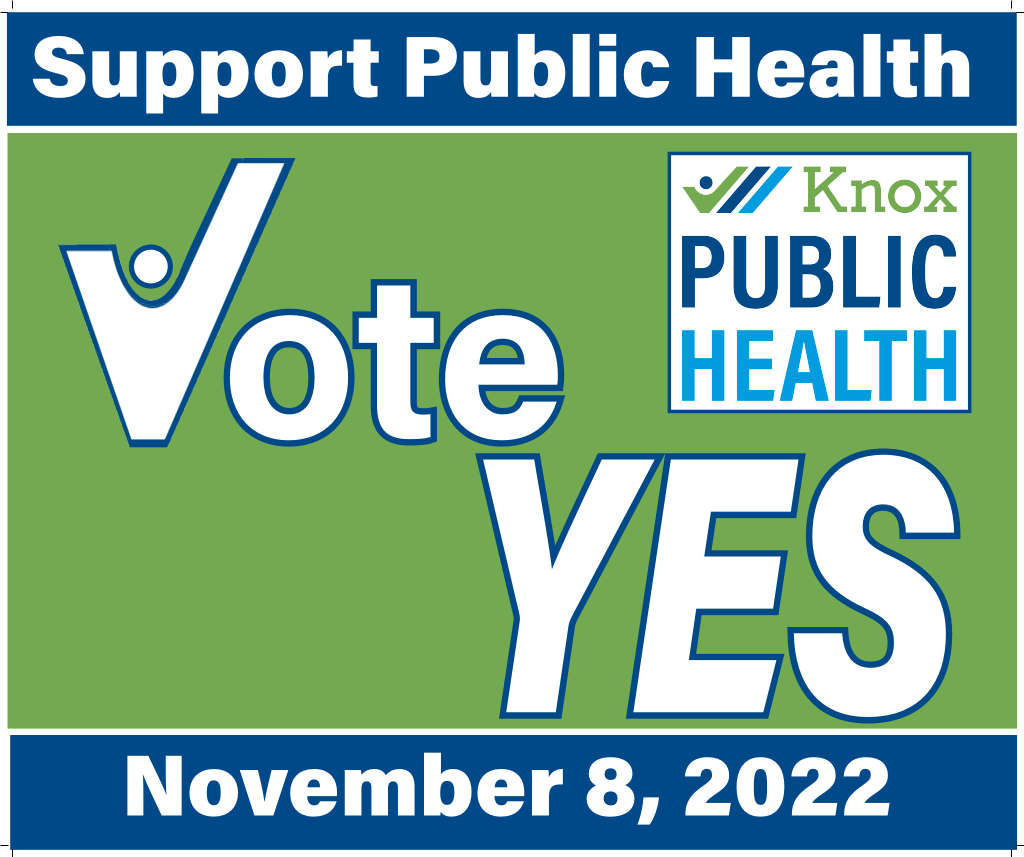
















The levy is an important part of the agency’s funding, accounting for nearly 20 percent of the public health budget and helping to fund a variety of essential services and valuable programming. Many levy-funded services are required by the government, but not funded by the state or federal government; or are programs determined by community need or community input.
The services and programs that levy dollars help to fund are numerous and multifaceted, including:
Levy dollars are also used to help fund mandated environmental health programs, such as inspections for food service operations, campgrounds, public pools, beaches, septic systems and water wells, The agency is restricted by state government on how much can be charged for fees which means local tax dollars pick up the uncovered costs for these mandated services
What the Levy DOES NOT fund
Levy funding is NOT USED for: Operation of the Community Health Center which is part of Knox Public Health or to Purchase Property.
A big area of growth during the past five years has been with the Community Health Center which opened offices in Danville in 2019 and acquired the Moore Family Practice and The Walk-In Clinic in 2021. All of the Community Health Center locations are fully funded through federal grants and Moore Family Practice and The Walk-In Clinic were purchased using funding from the American Rescue Plan Act (ARPA). While the Knox Public Heath staff work side-by-side with the Health Center staff to address health inequities, it is important that people understand that the Health Center has separate funding. It does not use local tax dollars.
With the growth in Health Center staff as well as staffing for public health programs and services, there is a shortage of office space at the main facility on Upper Gilchrist Road which the health department moved into in 2001. While it’s no secret the agency is actively looking for a new home, the requested increase in levy funding is strictly for programs and services and cannot be used to purchase or build a new facility.
Progress Since Passage of the Last Levy
Knox Public Health is seeking approval of a 1 mill operating levy on the Nov. 8 ballot. The proposed health levy is a replacement of the current 0.8 mill levy with a 0.2 mill increase. The current levy expires next year.
The replacement levy is for five years, with tax collection beginning in 2024, based on 2023 property values. The proposed levy will generate approximately $1.6 million a year, which accounts for nearly 20 percent of the public health budget and helps fund a variety of essential services and programs.
| Market Value of Your Home |
Previous Cost Per Year |
New Cost Per Year |
| $100,000 | $28.00 | $35.00 |
| $150,000 | $42.00 | $52.50 |
| $250,000 | $70.00 | $87.50 |
** The figures represented above are based on the 0.8 mill levy rate implemented in 2018, which is currently rolled back to 0.7 because of increased property value. Currently, with .7 mills, the tax collected on $100,000 is $24.70.
Rollbacks, updates and assessments
Factors that affect the actual amount of real estate taxes collected include: a roll back of the tax rate, tax updates and tax reassessments. According to state law, county auditors conduct a full reappraisal of real property every six years and update property values in the third year following each sexennial reappraisal. The update is based on home sales for the previous three years; the assessment is the result of a 2-year evaluation of each property to assess improvements or deterioration. According to the current state schedules, Knox County property taxes are set to be updated in 2023 and reappraised in 2026.
A levy is a request for a certain amount of funding based on the current tax rate once it is approved. Due to the update and reappraisal processes, this amount can increase. To correct this situation, the state will “roll back the tax rate” to be more reflective of the initial levy request. This usually happens after the first year of tax collection and can happen in subsequent years to reflect new housing or commercial activity. The current Health Levy will be affected by these audit processes.
Who benefits from your total tax bill?
Anyone who owns property pays real estate tax on that property whether it is just an emply lot or a house or a building for a business. Your total tax bill is divided between 12 or more entities who rely on those taxes to operate. If you are a property owner and would like to see how much of your total tax bill goes to each enitiy, go to the Knox County Auditor’s website, enter your address in the search bar in the top right-hand corner. If it does not immediately appear, follow the directions on the page to either enter your address or your name to get to your property. A page with details about your property will appear. At the top of the page, click on the Tax Distribution tab; a page will appear displaying a breakdown of your local tax bill, showing how much goes to each entity, i.e. Parks, Board of Health, Board of DD, Public Library, Township, Fire District, Schools, etc. There’s even a pie chart to graphically show you how your taxes are distributed.
Currently, the Health Levy is the 4th smallest tax levy in Knox County.
The first tax levy to support the health district was .4 milll levy that passed in 1988. Since then, Knox County voters have approved a tax levy every five years to support essential services and valuable programming for the health district. The health levy remained at .4 mills until 2012 when it was increased to .8 mills. The current request of a 1 mill levy is only the second increase in millage in 34 years.
The levy is an important part of the agency’s funding, accounting for nearly 20 percent of the public health budget and helping to fund a variety of essential services and valuable programs..
While the agency charges fees for some services and receives state and local grants for some programs, the grants and fees only partially fund what it costs to provide these services and programs. The health levy covers the remaining costs, including those for radon awareness, tobacco cessation, newborn home visiting, safe sleep program for infants, child car seat distribution, many environmental health programs and senior health and wellness.”
For some service fees, part of the fee goes to the state. For example, of the $25 fee for birth and death certificates, more than half goes to the state where the funds are distributed among other state programs.
For mandated environmental health programs, such as inspections for food service operations, campgrounds, public pools, beaches, septic systems and water wells, the agency is restricted on how much can be charged for fees which means local tax dollars pick up the uncovered costs for these mandated services.
Why Now?
Since passage of the first Health Levy in 1988, the levy has been on a 5-year renewal schedule. There are always three opportunities to pass the levy: in the general election (November) of the first year the levy is up for renewal, and in the following year during the primary election (March or May) or general election (November). Regardless of when the levy is put on the ballot during this cycle, the year in which the tax will be collected and on what year’s tax values it is based, remains the same. The intent is to renew the levy before it expires to avoid a lapse in funding.
Levy History
The first tax levy to support public health in Knox County was .4 milll levy that passed in 1988, five years after the city and county health departments combined. Since then, Knox County voters have approved a tax levy every five years to support essential services and valuable programming for the health district. The health levy remained at .4 mills until 2012 when it was increased to .8 mills. The current request of a 1 mill levy is only the second increase in millage in 34 years.
Public health services have been a part of Knox County since the mid-1850s when the city of Mount Vernon created a board of health to oversee disease outbreaks like small pox and to enforce standards for safe sanitation especially, in the downtown area where many businesses were located. A county health department was formed in 1919 as a result of the 1918 Influenza Pandemic and passage of the Hughes-Griswold Act which established the modern-day organization of local health departments in Ohio.
After more than 60 years of co-existence, in 1983 the county and city health departments were combined to form the Knox County General Health District which became known as the Knox County Health Department. In 2019, the agency changed its name to Knox Public Health.
